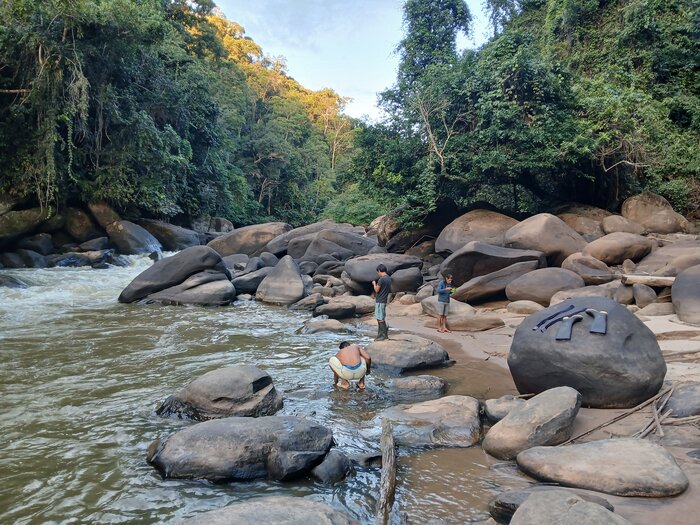
Kichwa communities take recovery of lost territory into their own hands

In the northern Peruvian Amazon, Kichwa communities have embarked on the mammoth job of demarcating their ancestral territory, which is overlapped by two natural protected areas.
When the Peruvian government created the protected areas more than 20 years ago, the Kichwa were dispossessed of large swathes of their territory and have been demanding its restitution ever since.
Despite their will for dialogue, the Kichwa continue to face a lack of political will to return their lands, as required by national and international norms and political agreements. Recent hard-won land titles cover only the portions of their territory outside the protected areas.
The demarcation process entails walking for several days at a time, following ancient trails to hunting and gathering areas, waterfalls and sacred places important to their culture. Already, one community has demarcated 115,000 hectares.
For the Kichwa elders, it’s the first time in over 20 years that they have been back to their lands. Young people taking part are seeing the land of their elders for the first time.
It is a great joy to be back after [many] years…We have worked and cared for all of this. - Kichwa Elder
In the face of state neglect, these communities, who cannot be named for safety reasons, are enhancing their control and governance of their ancestral lands, while strengthening their historic claims for ongoing advocacy processes and, ultimately, their struggle for territorial justice.
The mapping process also enables them to patrol and monitor their ancestral territory; use the new data for advocacy, legal and administrative processes; and identify new livelihood projects.
Not least, it is reviving Kichwa culture and strengthening their spirit to keep struggling for the recovery of their lands.
Overview
- Resource Type:
- News
- Publication date:
- 16 December 2024
- Region:
- Peru
- Programmes:
- Territorial Governance Culture and Knowledge Conservation and human rights
- Partners:
- Consejo Étnico de los Pueblos Kichwa de la Amazonia (CEPKA) Federación de Pueblos Indígenas Kechua Chazuta Amazonas (FEPIKECHA) Federación de Pueblos Indígenas Kechwas del Bajo Huallaga San Martín (FEPIKBHSAM)

